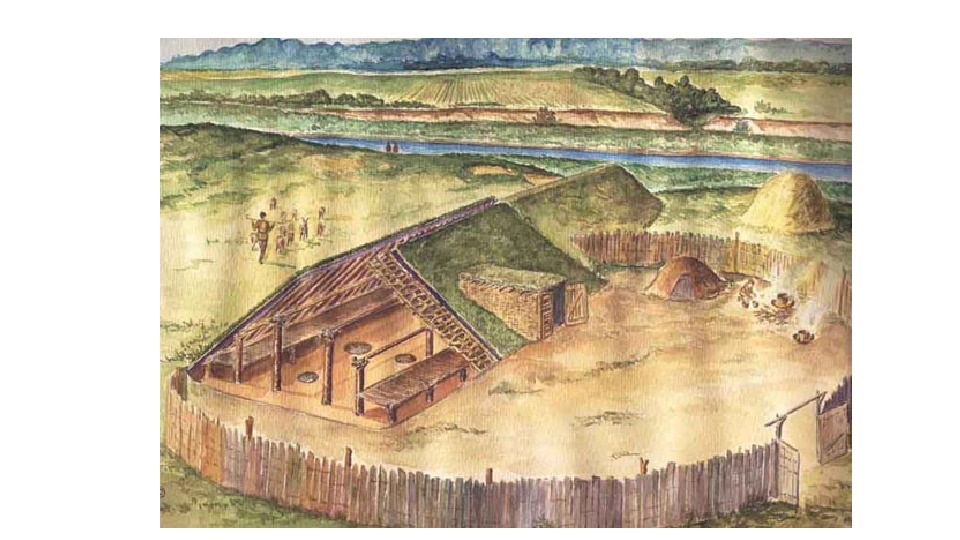LANDSCAPE FACTORS IN THE ORGANIZATION OF SETTLEMENTS OF THE MARI VOLGA REGION IN THE II — I MILLENNIA BC
DOI:
https://doi.org/10.24852/2587-6112.2020.5.89.92Keywords:
archaeology, landscape, settlements, housebuilding, dwelling, Mari Volga regionAbstract
The article aims to the study of one of the most current issues in the organization of settlements of the 2nd – early 1st Millennia BC – the natural landscape. The relief, availability and proximity of water resources, climatic conditions, and the species composition of the fauna and fl ora had a signifi cant impact on all aspects of the society, and especially its economic activities; led to the development of adaptive mechanisms, development of new territories, organization of settlement space. In other words, landscape factors were paramount in the organization of settlements. The article describes the possibilities of such analysis on the example of settlements of the 2nd – 1st Millennia BC located on the territory of the Mari Volga region. As a result, conclusions were made by the author about the peculiarity of the organization of settlements of the period in question in the territory of the Mari Volga region. The infl uence of landscape factors was established in relation to such basic criteria as the topography of settlements, ratio of the floor (base) to the ancient surface, shape of the dwellings, type of structures, and building materials.
References
Viktorova, V. D., 1984. In Stoyanov, V. E. (ed.). Drevnie poseleniya Urala i Zapadnoy Sibiri (Ancient Settlements of the Urals and Western Siberia). Sverdlovsk: Ural State University, 7–14 (in Russian).
Isachenko, A. G. 1991. Landshaftovedenie i fi ziko-geografi cheskoe rajonirovanie (Landscape Studies and Physico-Geographical Zoning). Moscow “ Vysshaia shkola” Publ. (in Russian).
Nikitin, V. V. 1991. Medno-kamennyi vek Mariiskogo kraia (seredina III – nachalo II tysiacheletiia do n. e.) (The Copper and Stone Age of Mari Region (Middle of 3rd – Early 2nd Millennia BC)). Yoshkar-Ola: Mari Scientifi c and Research Language, Literature, History and Ethnography Institute (in Russian).
Nikitin, V. V., Solov’ev, B. S. 2002. Poseleniia i postroiki Mariiskogo Povolzh’ia (epokha kamnia i bronzy) (Settlements and Dwellings of the Mari Volga Region: Stone and Bronze Ages). Series: Trudy Mariiskoi arkheologicheskoi ekspeditsii (Proceedings of Mari Archaeological Expedition) VII. Yoshkar-Ola: Mari Scientifi c and Research Language, Literature, and History Institute (in Russian).
Khalikov, A. Kh. 1969. Drevniaia istoriia Srednego Povolzh’ia (Ancient History of the Middle Volga Region). Moscow: “Nauka” Publ. (in Russian).
Shnitnikov, A. V. 1957. In Zapiski geografi cheskogo obshchestva SSSR ((Proceedings of the Geographic Society of USSR) 16. Moscow, Leningrad (in Russian).
Shnirelman, V. A. 1989. Vozniknovenie proizvodjashhego hozjajstva: problema pervichnyh i vtorichnyh ochagov (Emergence of Producing Economies: the Issues of Primary and Secondary Centers). Moscow: “Nauka” Publ. (in Russian).

Downloads
Published
How to Cite
Issue
Section
License
Copyright (c) 2020 E.E. Vorobeva

This work is licensed under a Creative Commons Attribution-NonCommercial 4.0 International License.







